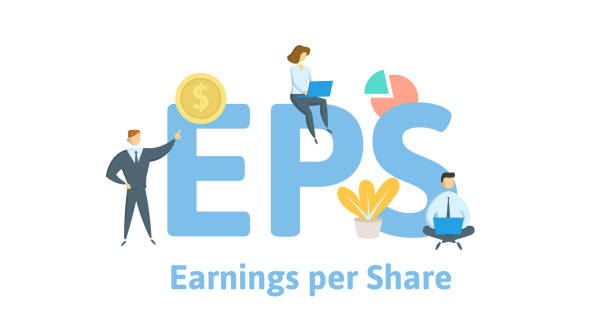Understanding EPS
Earnings per share or EPS is the portion of a company’s earnings that is allocated to each individual share outstanding.
Many times the question on investors’ minds is, “How is EPS useful to me as an investor?” We will try to answer that question today.
Why is EPS important to investors?
EPS is an important metric for an investor due to the following reasons:
A measure of profitability
Earnings per share as a metric are extremely important in measuring a company’s profitability. In fact, in the whole subject of fundamental analysis, EPS is the only metric that isolates net income to find out what shareholders earn by investing in the company. As a layman, we understand that a company is in the market to do business and make a profit, and investors invest in companies to be a part of the profitability of the company. An ever-growing EPS means that the investor gets a share of the company’s ever-increasing profits. The increase in EPS also indicates that the company is creating value for its investors. Conversely, a consistently falling or negative EPS indicates financial problems, low profitability or consistent losses, and erosion of investor value.
EPS answers two main questions for investors. The first is “how much earnings per outstanding share does a company make?” and the second is “how much profit accrues to a shareholder?”
An indicator of the payment of dividends
Dividends are a portion of a company’s earnings that shareholders receive as a return on their investment. Many investors like the stable income associated with dividends. Investors also see dividends as a positive sign and strong growth in the company’s future. The company can only pay dividends if it has excess earnings per share. While there is no direct relationship between dividend payouts and earnings per share, it is commonly observed that only those companies that have consistently stable or growing EPS pay dividends to their shareholders. Although dividends are very subjective and many things are considered before the dividend payment; Investors looking for dividend income should check the company’s EPS before investing.
A determinant of the P/E ratio
Beyond profitability, what investors are interested in is knowing the value that a certain stock brings to their portfolio. The P/E ratio can help investors value the holding. The key determinant of the P/E ratio is EPS;
P/E ratio = Price per equity share / Earnings per share
Let’s understand how EPS is important for this metric. Suppose Company A has an equity share priced at $100 and its EPS for the year 2017 is $20. Therefore, your P/E ratio will be 100/20 = 5. This means the current profitability; It will take 5 years for the company to obtain its market price per share. In other words, investors will have to keep their investment in the company for 5 years to recover their investment. Now let’s take company B; its market price per equity share is $1,000 and its EPS is $100, so its P/E ratio will be 1,000/100 = 10. This means investors will need to stay invested for 10 years to get their investment back in the company.
If we had only looked at EPS, Company B looks better with an EPS of $100 than Company A, which has an EPS of $20. Return of investment.
Main point
Earnings per share is a common financial ratio. It is very easily accessible to investors as the company provides EPS figures in its annual reports. It is also often the first index that investors look at due to its ease of understanding and indication of performance. Despite its simplicity, ESP as a metric is extremely powerful and packs crucial information into a single number. It allows investors to compare investments across sectors, industries and to some extent also with alternative investments. It also helps chart the financial performance of a particular company over time. This helps investors make informed decisions.
Although one should do a complete market and fundamental analysis before investing in a company, we can say that EPS as a metric itself is also quite revealing about the company’s profitability and value and can give investors an edge in ranking. profitable companies. of the unprofitable.



